Solar eclipse of January 22, 1898
A total solar eclipse occurred on January 22, 1898. A solar eclipse occurs when the Moon passes between Earth and the Sun, thereby totally or partly obscuring the image of the Sun for a viewer on Earth. A total solar eclipse occurs when the Moon's apparent diameter is larger than the Sun's, blocking all direct sunlight, turning day into darkness. Totality occurs in a narrow path across Earth's surface, with the partial solar eclipse visible over a surrounding region thousands of kilometres wide. It was visible across central Africa, and into India and Asia.
| Solar eclipse of January 22, 1898 | |
|---|---|
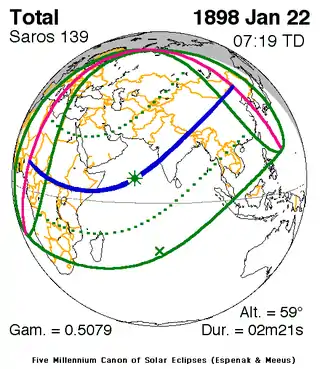 Map | |
| Type of eclipse | |
| Nature | Total |
| Gamma | 0.5079 |
| Magnitude | 1.0244 |
| Maximum eclipse | |
| Duration | 141 sec (2 m 21 s) |
| Coordinates | 9.5°N 63.6°E |
| Max. width of band | 96 km (60 mi) |
| Times (UTC) | |
| Greatest eclipse | 7:19:12 |
| References | |
| Saros | 139 (23 of 71) |
| Catalog # (SE5000) | 9275 |
Observations
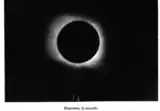 1.5 second exposure |
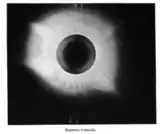 9 second exposure |
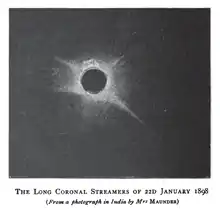 |
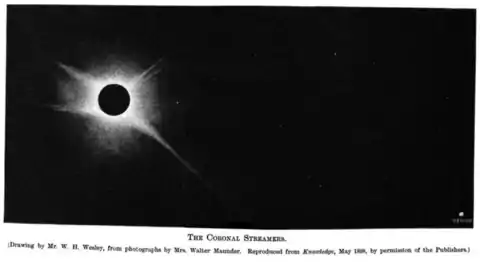 Wide view of streamers with the planet Venus | ||
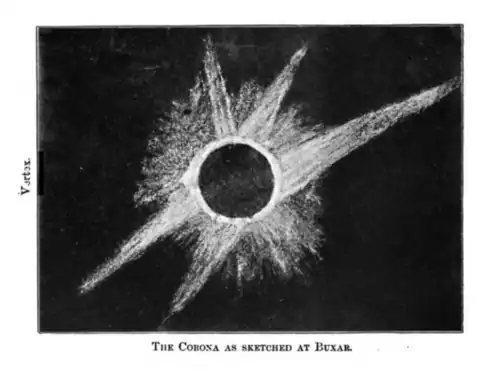 Sketch | ||
Related eclipses
It is part of solar Saros 139.
References
- NASA graphic
- Mabel Loomis Todd (1900). Total Eclipses of the Sun. Little, Brown.
- The Indian eclipse, 1898 : report of the expeditions organized by the British Astronomical Association to observe the total solar eclipse of 1898 January 22 / edited by E. Walter Maunder.
- Edward Walter Maunder, British Astronomical Association (1899). The Indian Eclipse, 1898: Report of the Expeditions Organized by the British Astronomical Association to Observe the Total Solar Eclipse of 1898 January 22. Hazell, Watson, and Viney.
- Photo of Solar Corona January 22, 1898
| Wikimedia Commons has media related to Solar eclipse of 1898 January 22. |
This article is issued from Wikipedia. The text is licensed under Creative Commons - Attribution - Sharealike. Additional terms may apply for the media files.
.jpg.webp)

